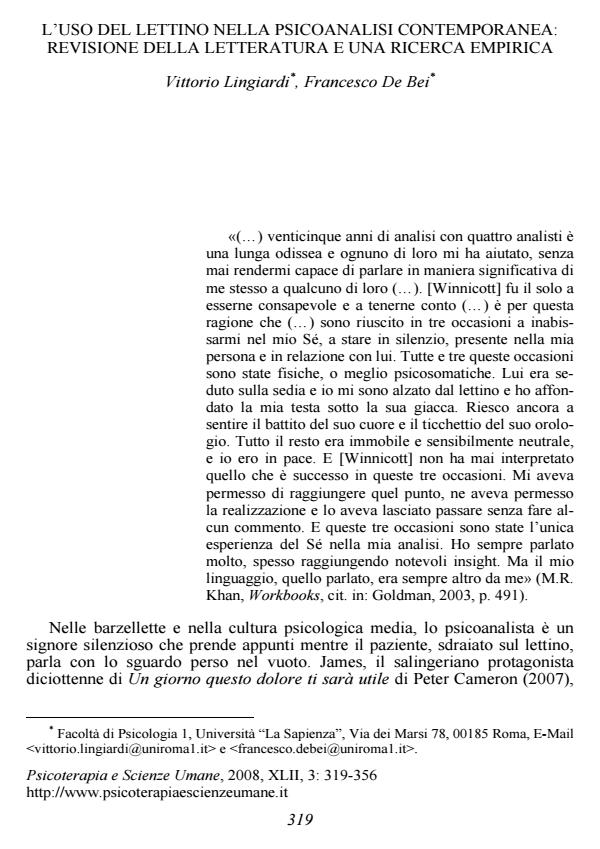L'uso del lettino nella psicoanalisi contemporanea: revisione della letteratura e una ricerca empirica
Journal title PSICOTERAPIA E SCIENZE UMANE
Author/s Vittorio Lingiardi, Francesco De Bei
Publishing Year 2008 Issue 2008/3
Language Italian Pages 38 P. 319-356 File size 253 KB
DOI
DOI is like a bar code for intellectual property: to have more infomation
click here
Below, you can see the article first page
If you want to buy this article in PDF format, you can do it, following the instructions to buy download credits

FrancoAngeli is member of Publishers International Linking Association, Inc (PILA), a not-for-profit association which run the CrossRef service enabling links to and from online scholarly content.
Use of the couch in contemporary psychoanalysis: review of the literature and an empirical research. After a review of psychoanalytic approaches to the use of the couch in analytic practice, the authors present an empirical research on a sample of Italian analysts from the main institutes and associations (SPI, CIPA, AIPA, AIPsi, AIPP, ISIPSé, SIPRe, ASP). Psychoanalysts were asked to answer a questionnaire (Psychoanalytic Couch Questionnaire [PCQ]) aimed at investigating: (a) sociodemographic characteristics; (b) theoretical and clinical models; (c) attitude toward the couch in the analytic setting. The findings of this reseaech show that: (a) most analysts do not consider the couch as essential to their analytic practice; (b) their clinical approach to the couch is more influenced by their educational background than by their theoretical membership; (c) the rigorous adhesion to the technical tenet of the couch clearly distinguishes classical analysts (SPI, AIPP) from post-classical (ISIPSé, SIPRe, ASP) and junghian (AIPA, CIPA) analysts. [KEY WORDS: couch, psychoanalytic technique, theory of technique, research, Italy]
Vittorio Lingiardi, Francesco De Bei, L'uso del lettino nella psicoanalisi contemporanea: revisione della letteratura e una ricerca empirica in "PSICOTERAPIA E SCIENZE UMANE" 3/2008, pp 319-356, DOI: